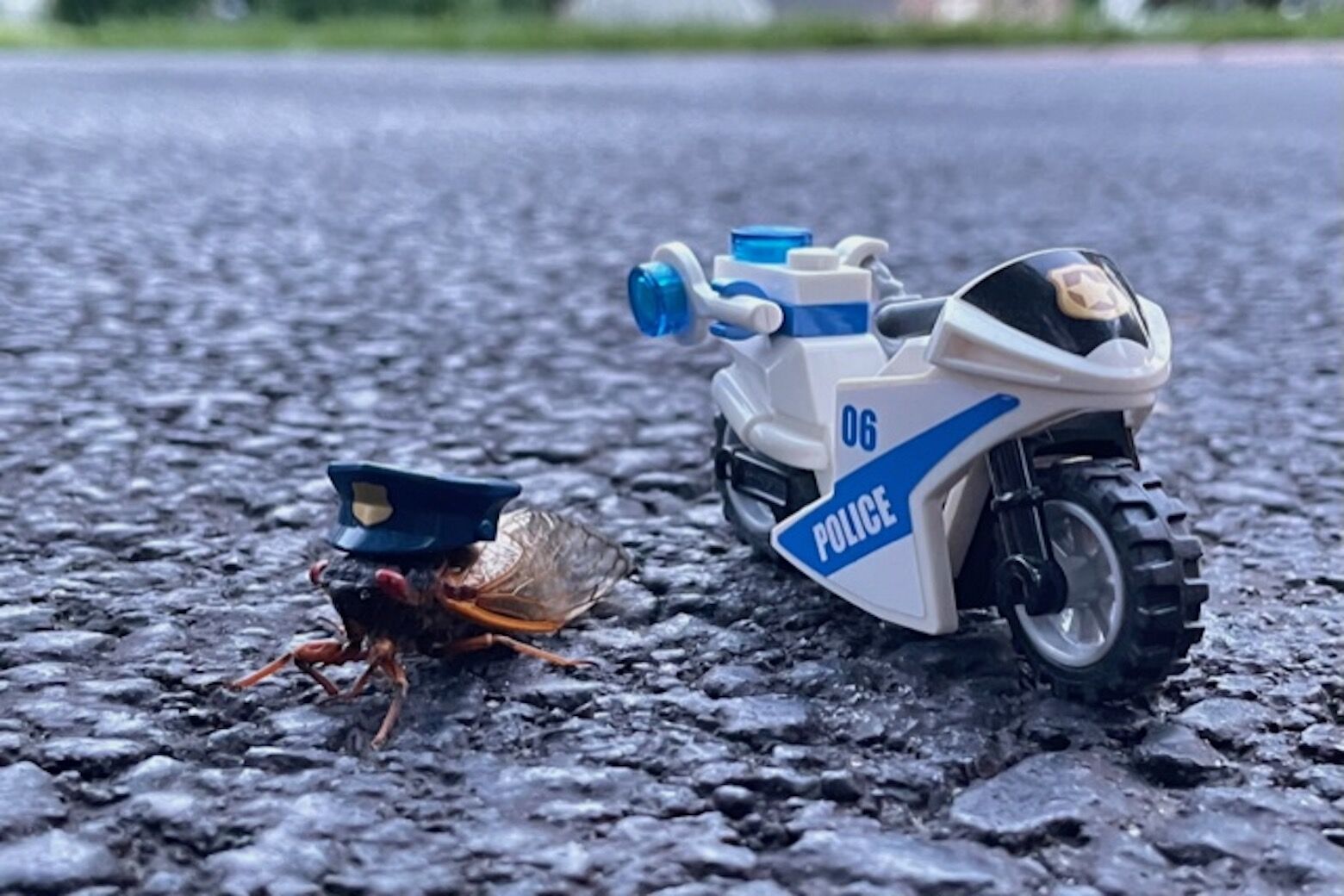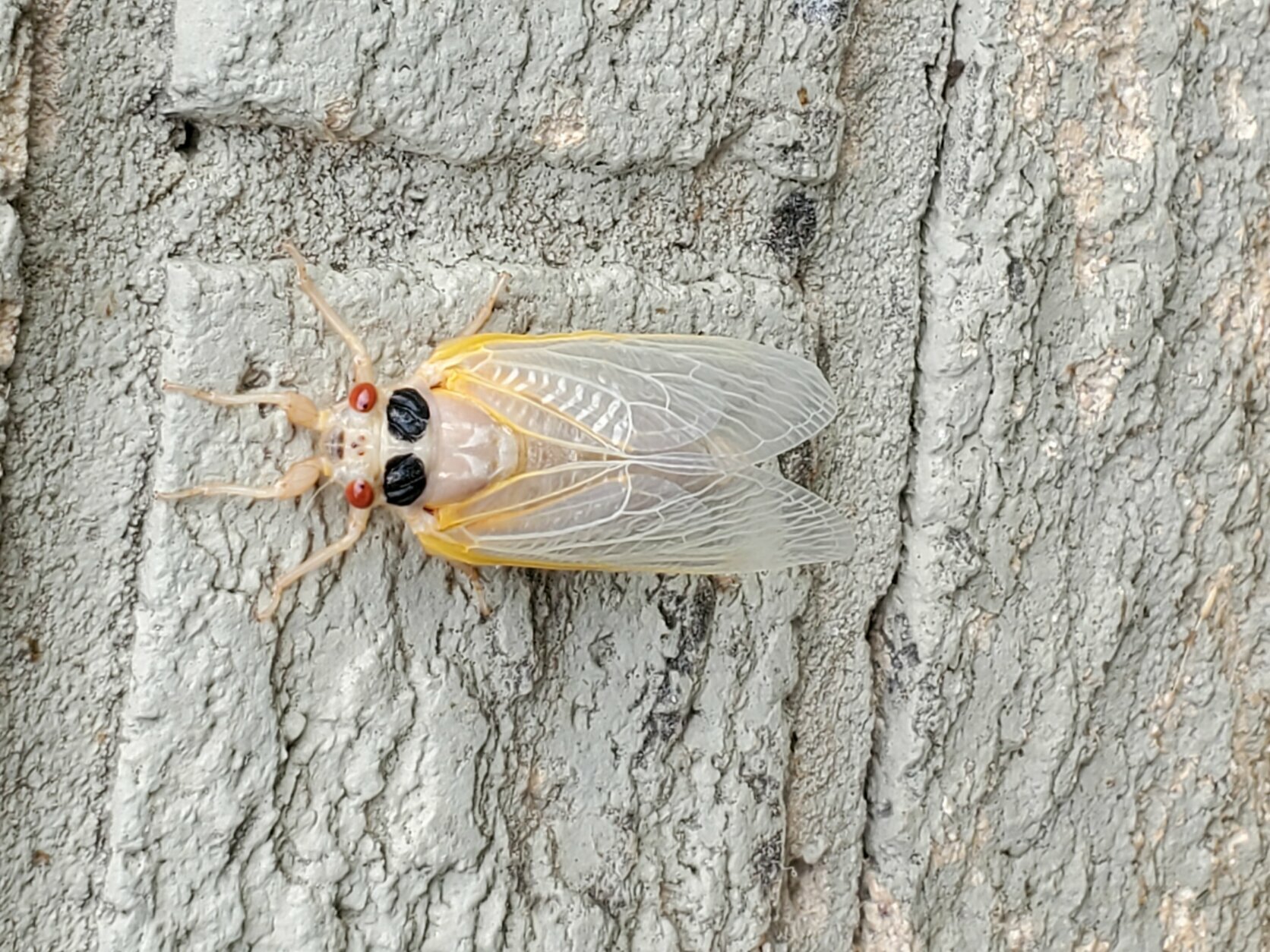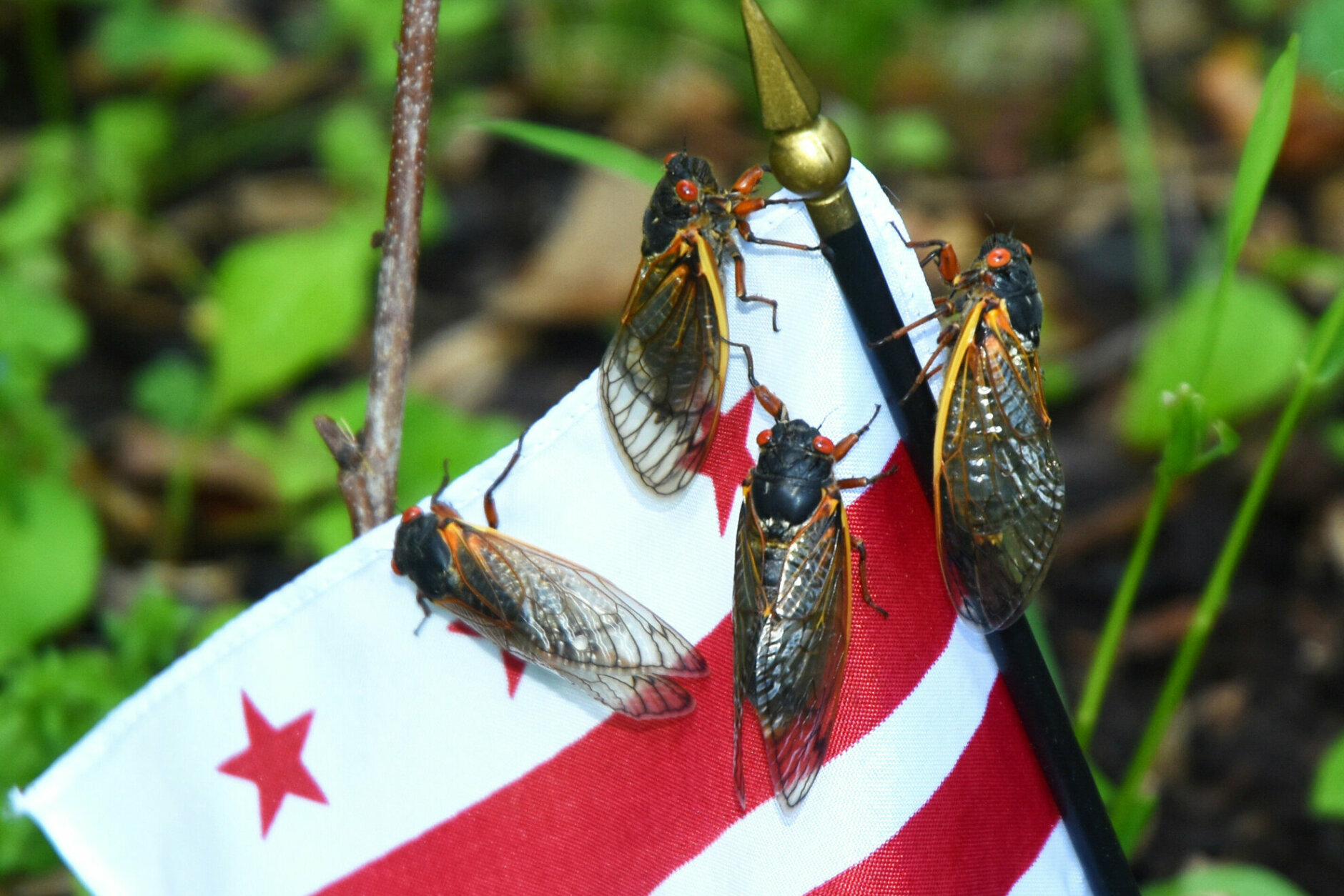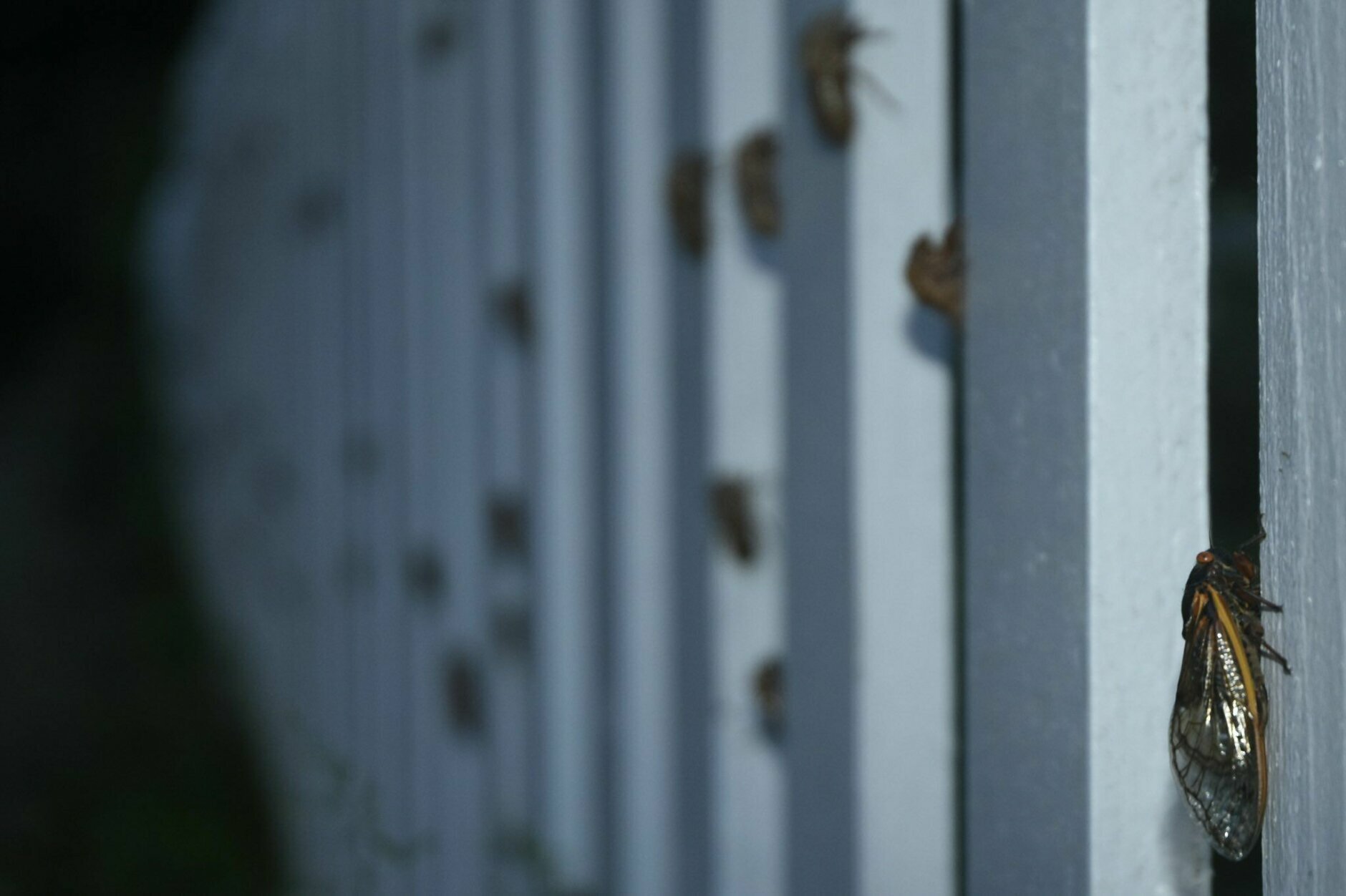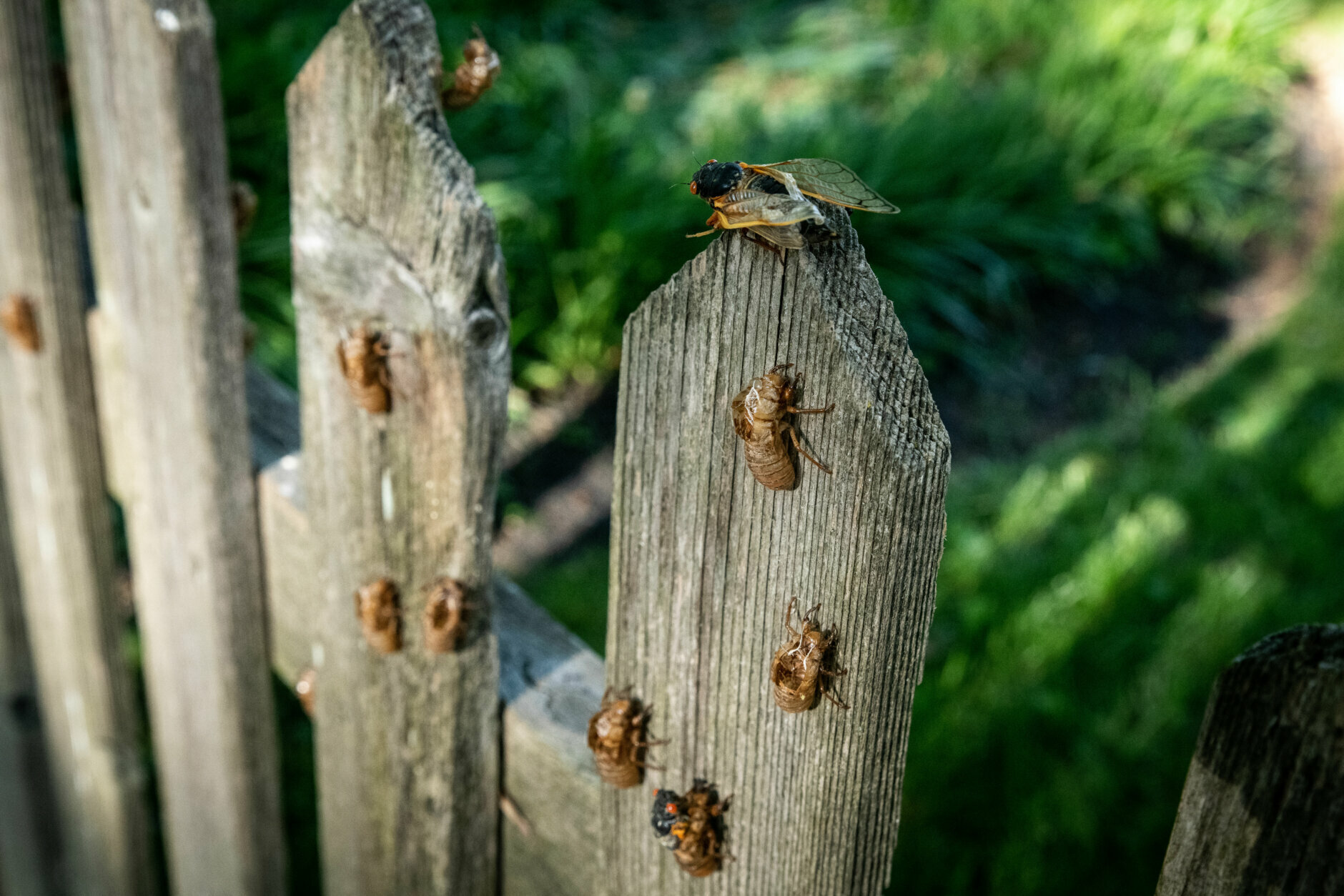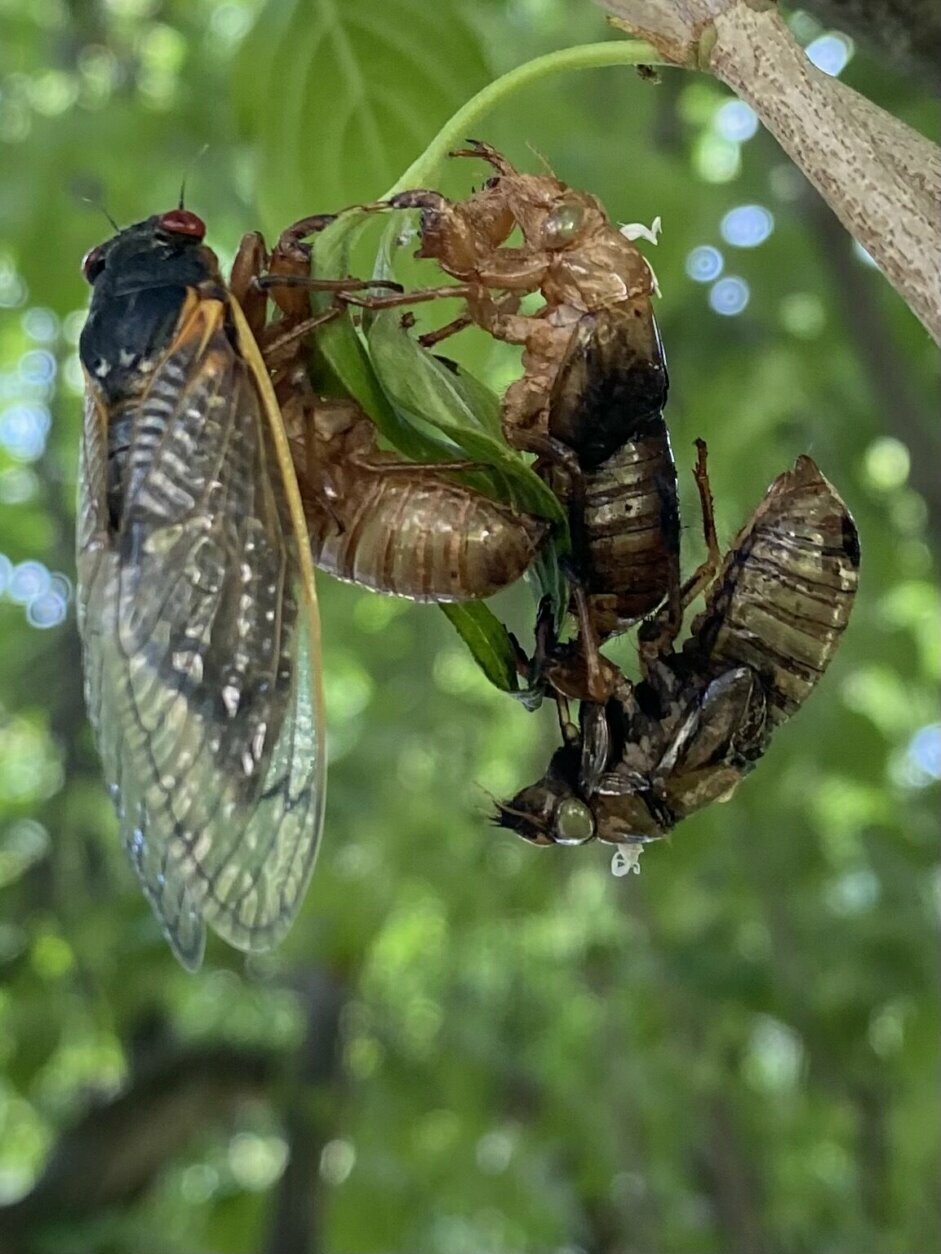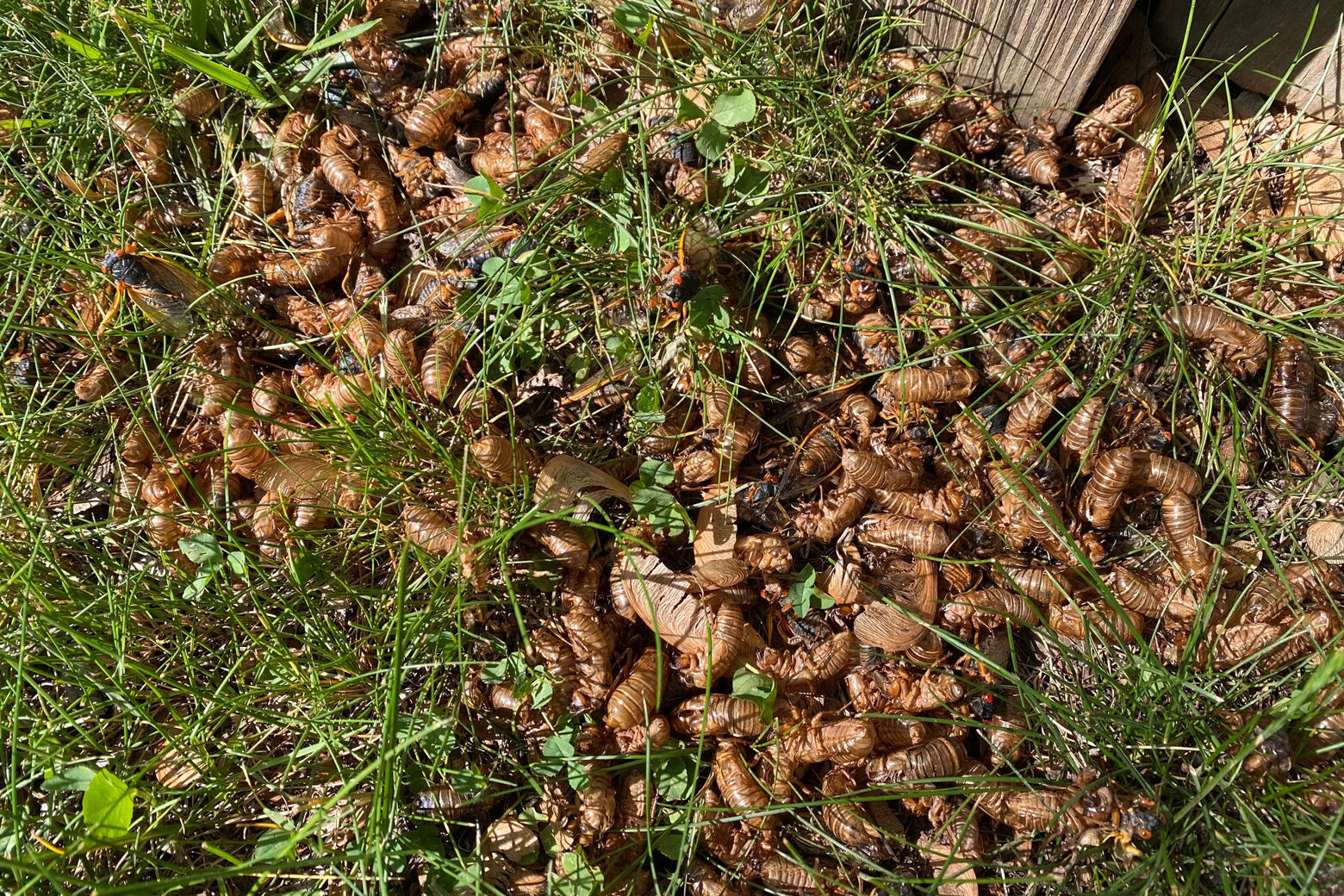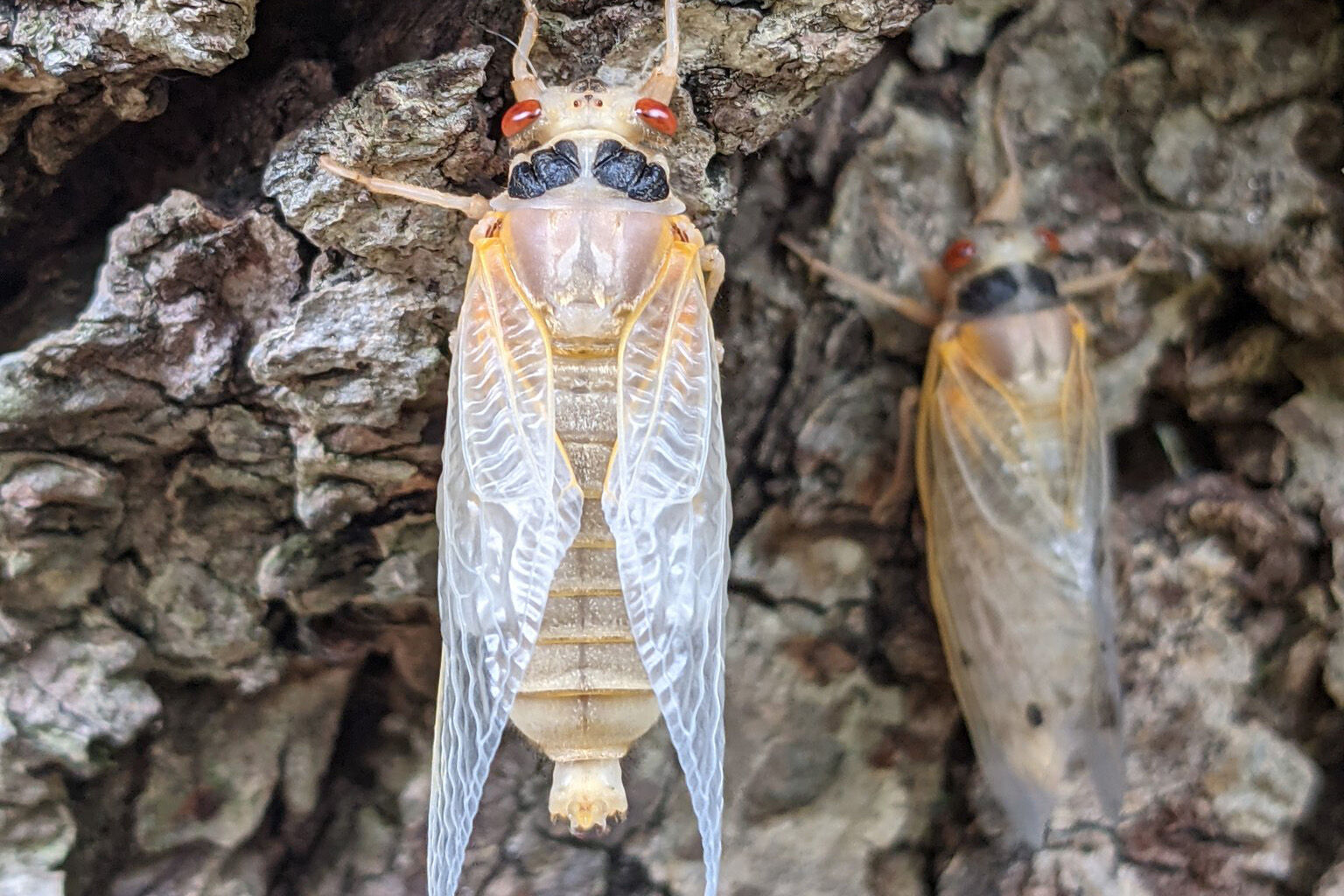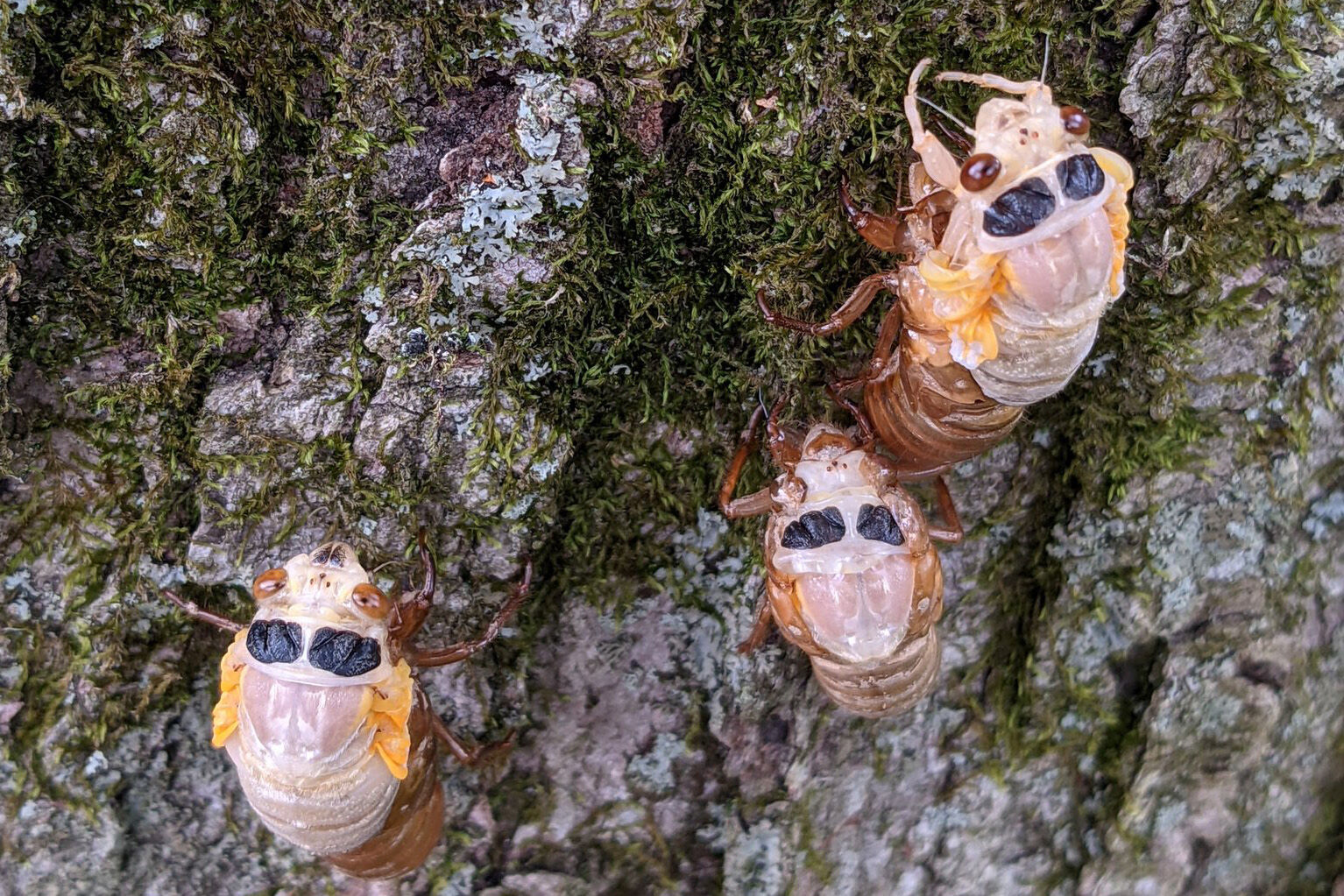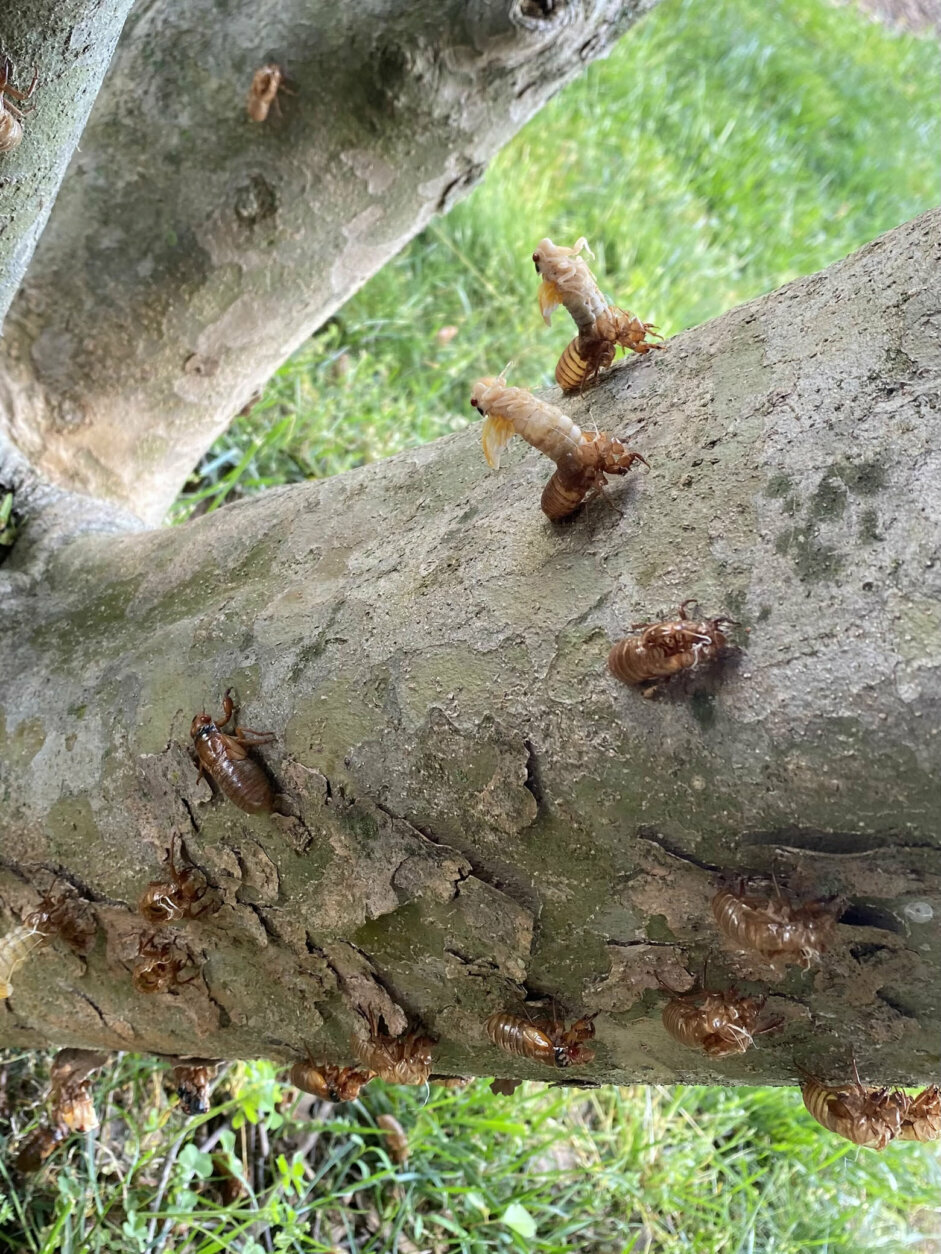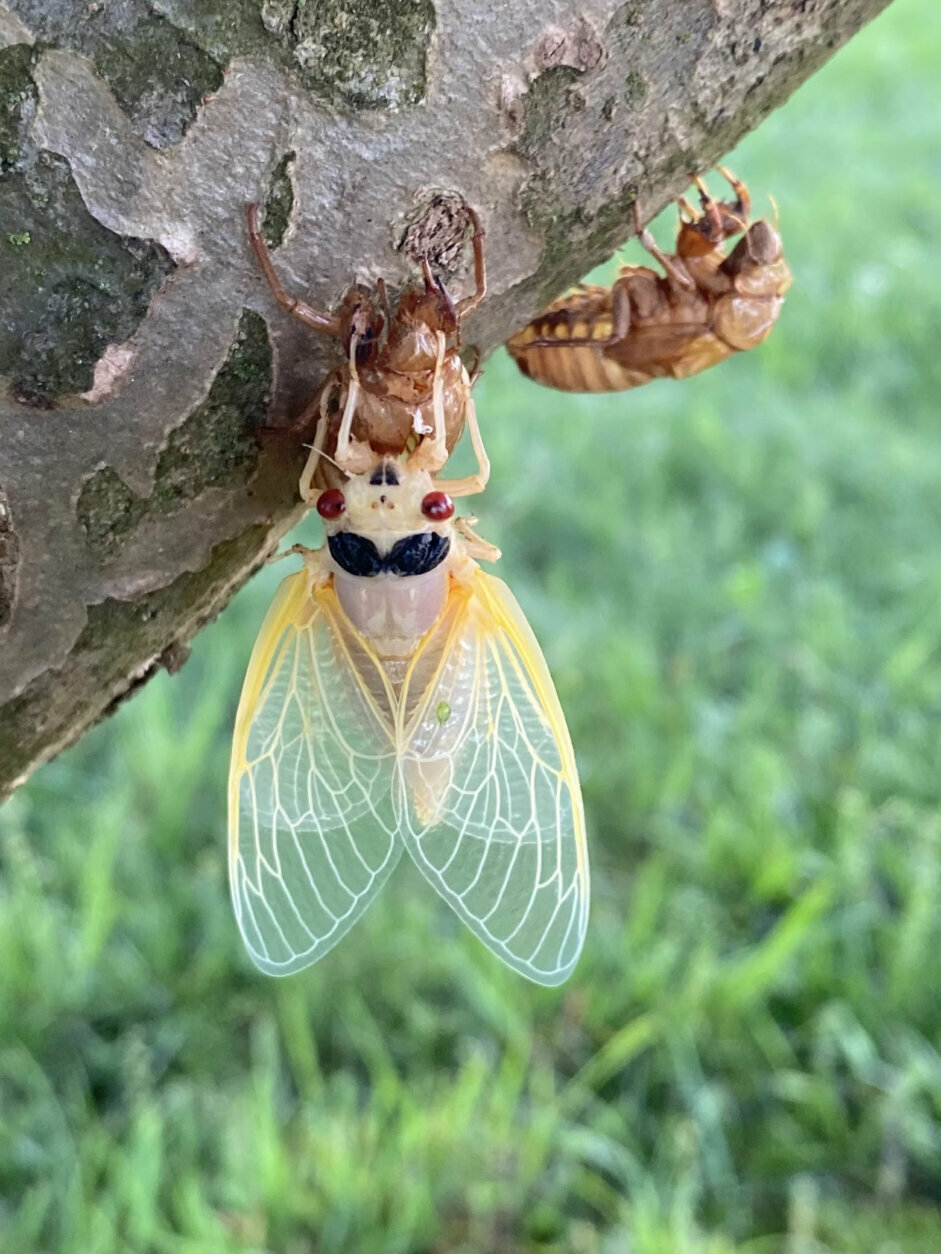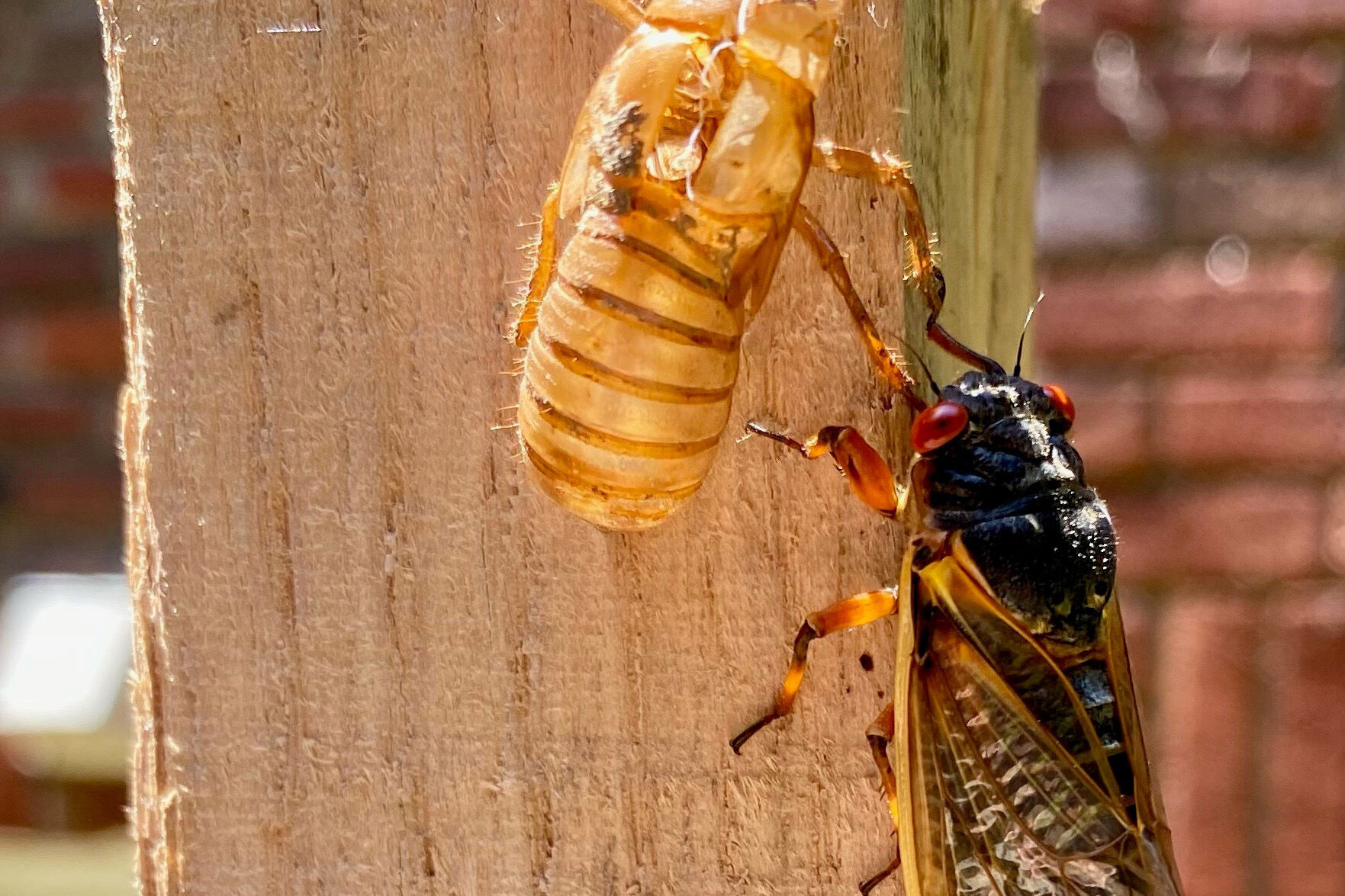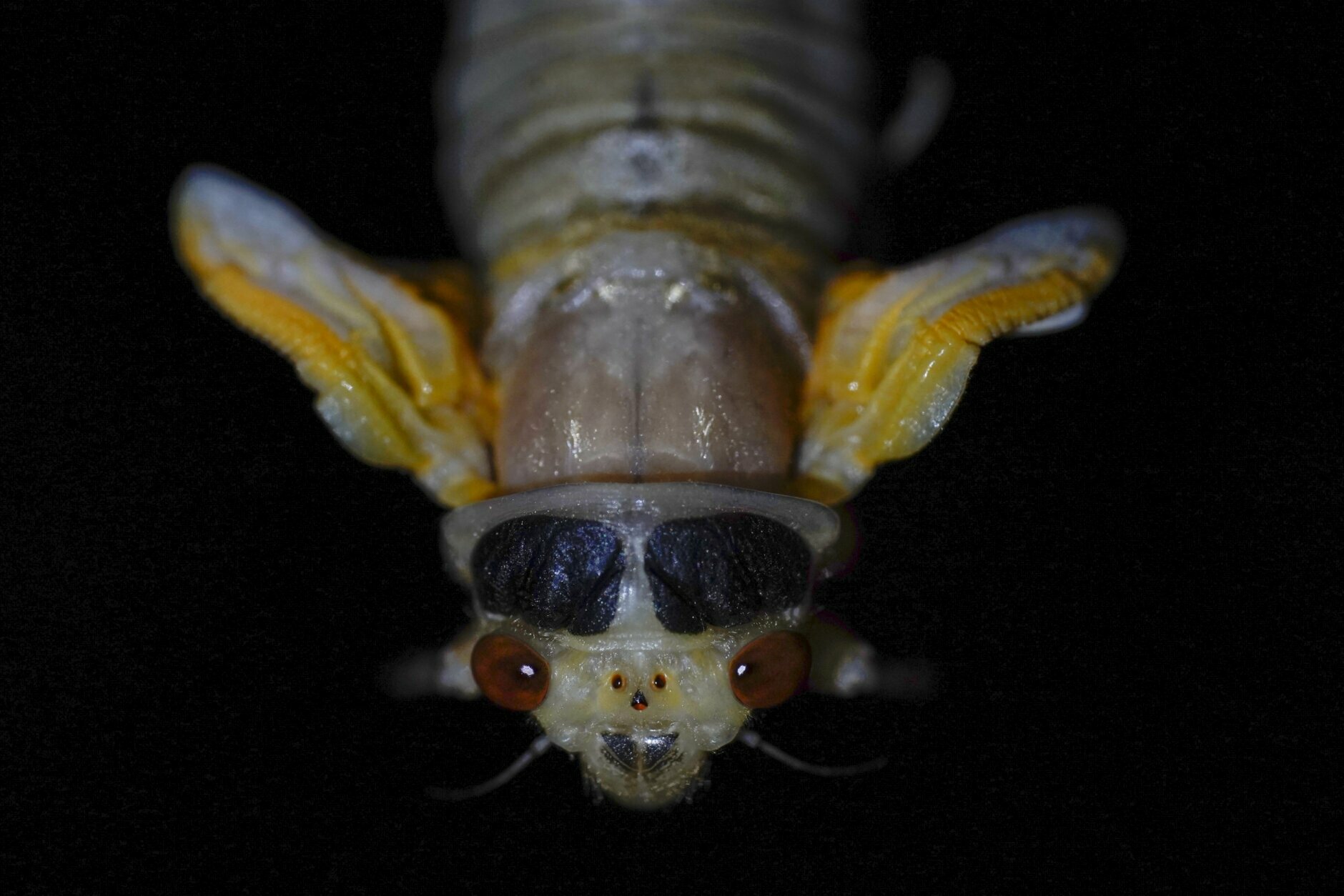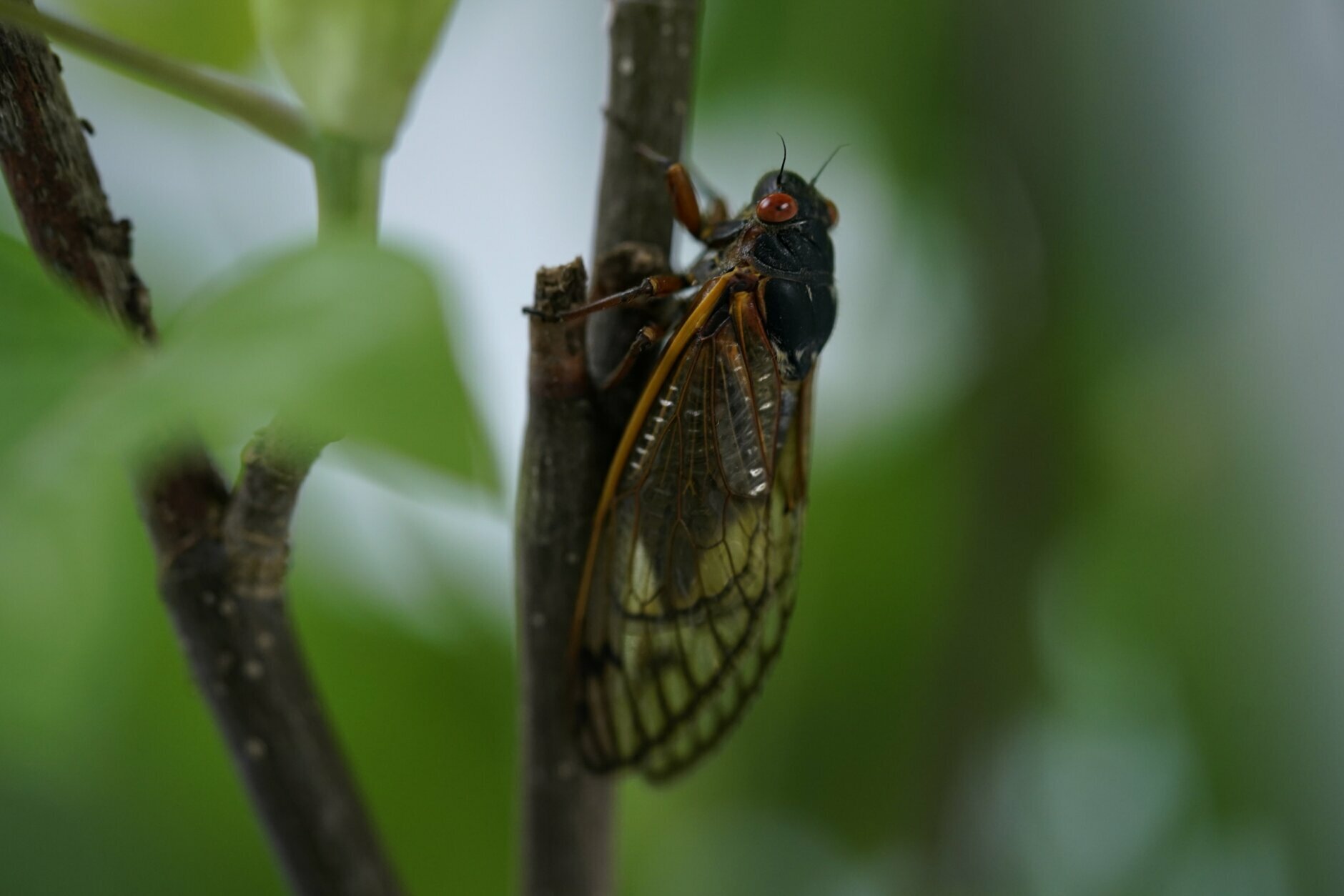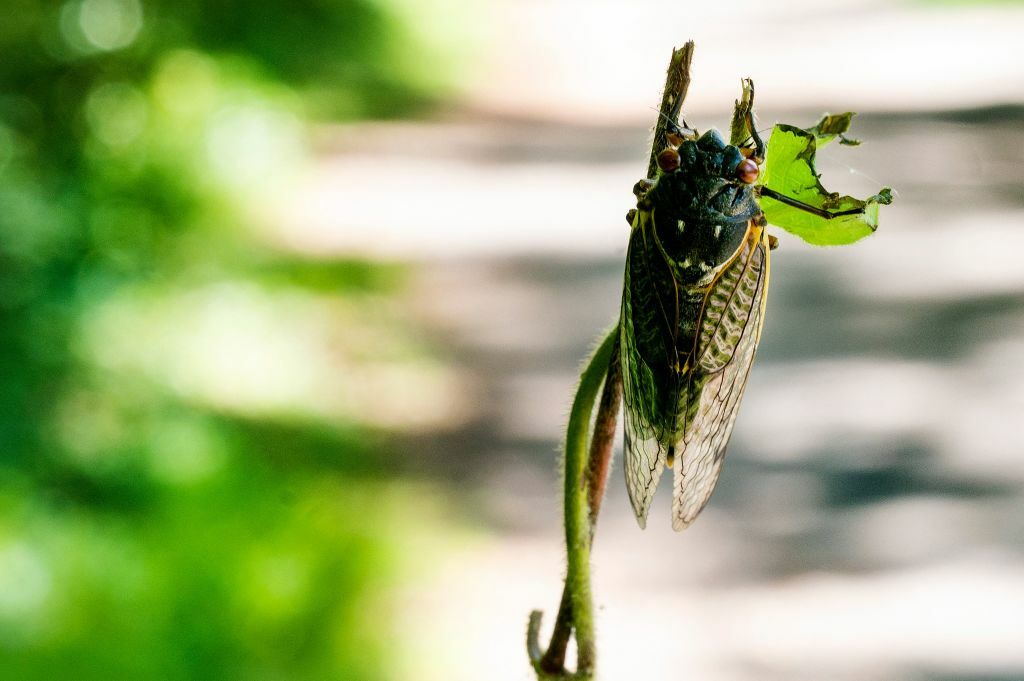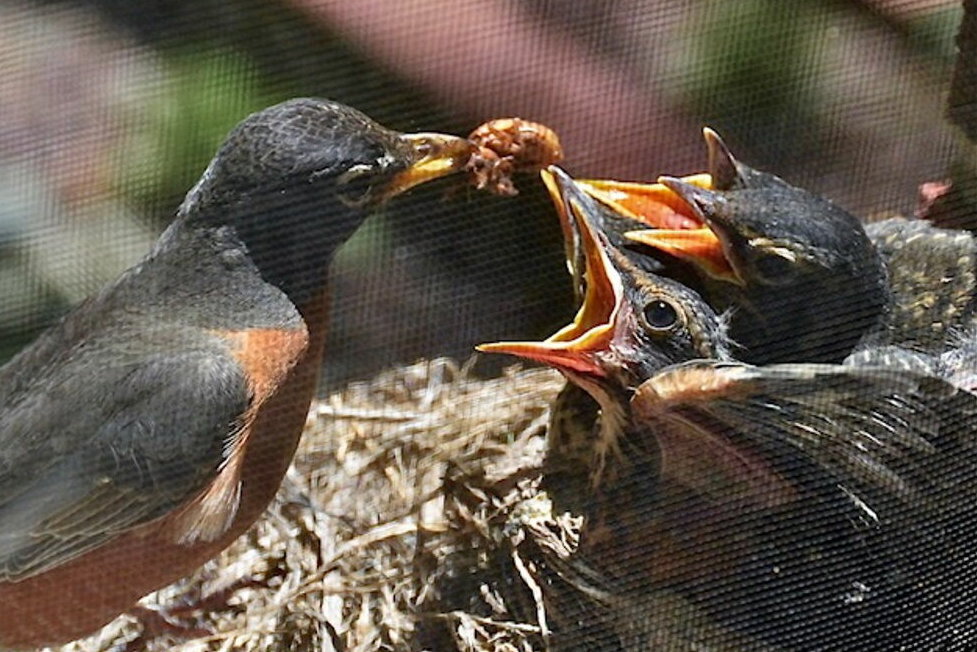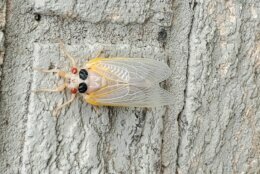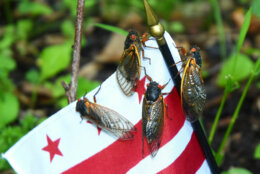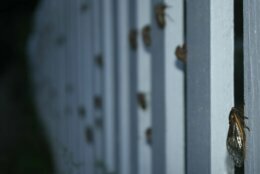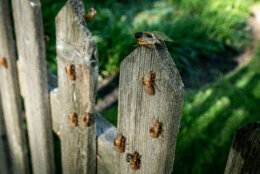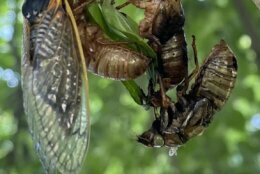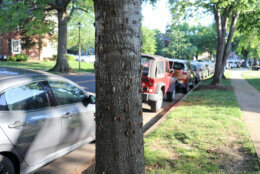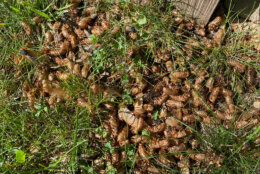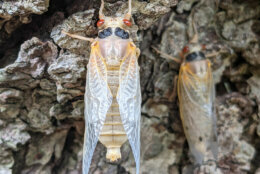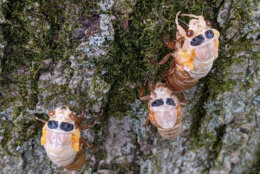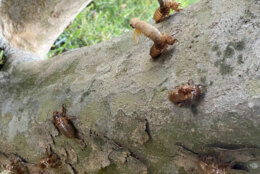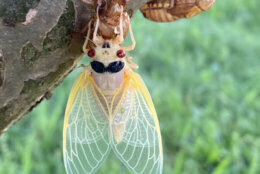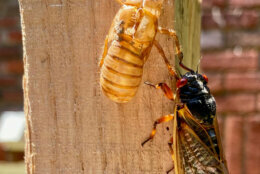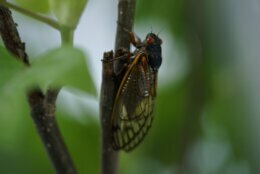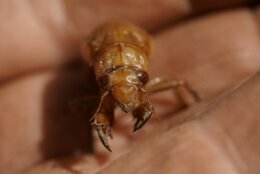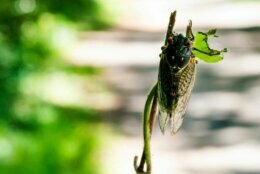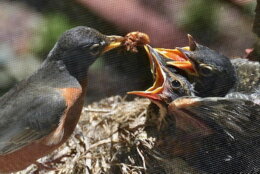Male cicadas have awakened after a 17-year nap are busy singing up a storm in the D.C. region, and as they sing, they share secrets about their species.
“Many people don’t realize there are actually three species of periodical cicadas emerging with Brood X this year,” said University of Maryland entomology professor Mike Raupp. “We can tell the three species apart by their size, their color patterns, but most distinctively by their calls and songs.”
-
More Cicada News
- PHOTOS: Cicadas
- FAQ: What you need to know about Brood X
- For some foodies, Brood X cicadas are a bottomless buffet
The largest is Magicicada septendecim, which has brilliant orange stripes on the underside of its abdomen.
“Its call sounds like an alien spaceship landing to me. It’s up in the treetops; it’s very ethereal,” Raupp said, adding that some people think the call sounds like the word “pharaoh.”
Magicicada cassinii is a smaller species with a jet-black abdomen. “To me, (this species) sounds like an electronic transformer short-circuiting. It’s a screechy, loud noise,” said Raupp.
The third species is called Magicicada septendecula, and Raupp compares its call to a katydid or a cricket. “Its abdomen is also primarily black, but it’s got some faint orange bands on the underside,” he said.
Cicadas also make alarm or distress calls to scare off predators, and they have special courtship songs.
“These are designed to try to convince that special someone that she should be the mother of his nymphs,” said Raupp. “He has to give his very best performance, and often times it seems that it’s the loudest cicada that turns out to be the winner in this game of romance.”
The different species also thrive in different habitats.
“Magicicada septendecim can often be found in upland sites, while cassinii is often found in lower and sometimes flood plain areas. But all three species can be found together in the same locations,” Raupp said.
If you’re wondering if the cicadas will get any louder, the answer is probably not. Raupp said the Brood X invasion has peaked in our region.
“All three species are making an enormous racket up in the treetops,” he said. “The sound level can reach anywhere from 80 to 100 decibels. That’s the sound of a jet aircraft flying overhead or a lawnmower engine. They are really loud.”










